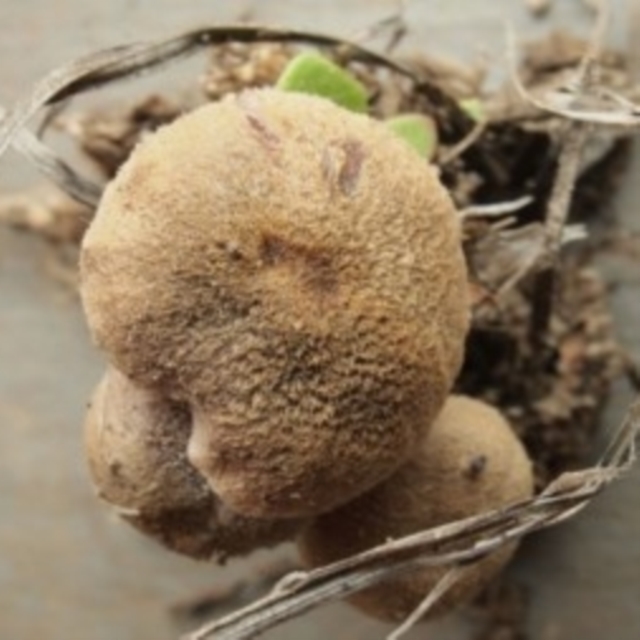Crinipellis australis
The fruitbody is a mushroom, with a cap atop a central stem. The cap is pallid brown or grey brown, shallowly convex, dry, up to 15 millimetres in diameter and with a dense covering of very short, matted hairs. The gills and stem are similar to the cap in colour. The stem is dry, may be up to 25 millimetres long and it also has short hairs.
There is neither a partial nor a universal veil.
The texture is somewhat toughish.
Spore print: white.
This species has been rarely reported in Australia, though in Canberra it must be regarded as widespread and probably fairly common. Elsewhere it has been reported as growing on the ground, often attached to buried grass stems. Observations in Canberra have shown this fungus to have a strong preference for Themeda and it can be found growing from dead material at the bases of Themeda tussocks. In most mushroom-producing species, when the mushrooms dry out they shrivel, collapse and that's the end of spore release. However, with Crinipellis australis the dried out mushrooms stay upright, swell up again in moist conditions and resume spore release. For more information see: https://www.anbg.gov.au/fungi/case-studies/crinipellis-australis.html.
The formal description of this species was published in 1997 in the monograph listed below, but the fungus had been known from Australia from early in the 20th century, but mistakenly identified as another species.
Look-alikes
Small, greyish-brown mushrooms can be found in various genera. The colour, hairs and a stiff to toughish texture help identify Crinipellis australis, though those features alone aren't conclusive. However, if you see such a mushroom growing from grass stems (in particular Themeda) then it must almost certainly be Crinipellis australis.
Reference
Grgurinovic, C.A. (1997). Larger fungi of South Australia, The Botanic Gardens of Adelaide and State Herbarium and The Flora and Fauna of South Australia Handbooks Committee, Adelaide.
Crinipellis australis is listed in the following regions:
Canberra & Southern Tablelands
Species information
- Crinipellis australis Scientific name
- Common name
- Not Sensitive
- Local native
- Non-invasive or negligible
- Up to 730m Recorded at altitude
- Machine learning










